
As the cooler season approaches, it’s important to prepare your plants for the changes ahead. Autumn garden care plays a crucial role in ensuring the health and beauty of your yard throughout this transitional period.
Proper care during this time not only helps your plants survive the colder weather but also sets the foundation for a vibrant and thriving garden in the coming months. From pruning and trimming to soil testing and fertilization, there are several tasks that deserve your attention to maximize the potential of your garden.
In this comprehensive guide, we will walk you through the essential steps to take care of your garden during autumn. Whether you’re a seasoned gardener or just starting out, these tips and techniques will help you maintain a healthy and stunning landscape.
Key Takeaways:
- Prepare your plants for the cooler season ahead by implementing proper autumn garden care techniques.
- Pruning and trimming are essential tasks to ensure the health and vitality of your autumn plants.
- Conduct soil testing and choose the right fertilizer for optimal autumn planting.
- Learn about the best plants to grow in autumn and how to properly plant and maintain them.
- Protect your garden from common autumn garden pests through effective pest control methods.
Pruning and trimming for autumn plants
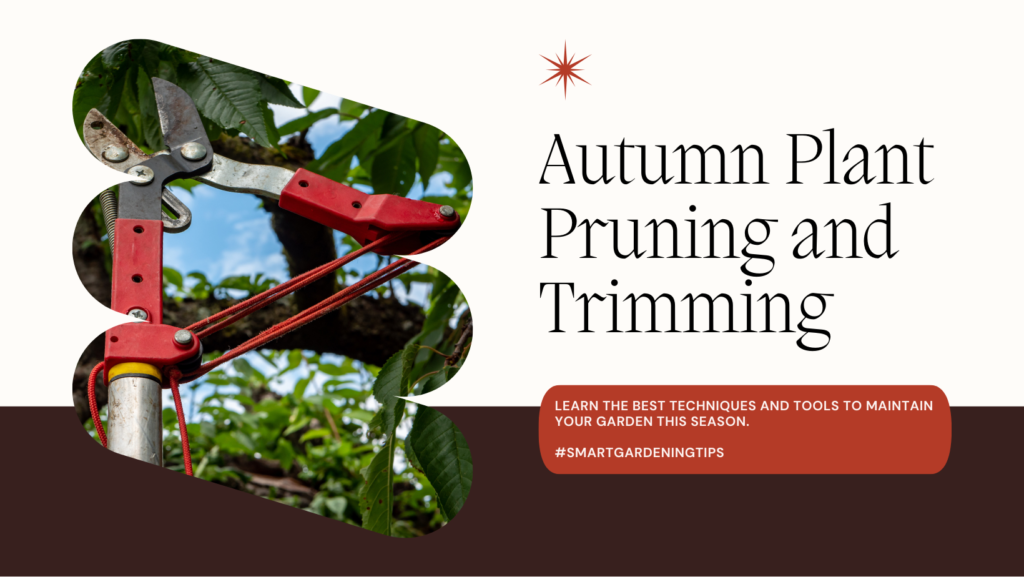
Proper pruning and trimming are essential tasks when caring for your autumn plants. By following the correct techniques, you can ensure that your trees and shrubs are prepared for the upcoming fall season. Here are some essential tips and guidance to help you achieve optimal results.
1. Timing is crucial
Timing is key when it comes to pruning and trimming your autumn plants. You should aim to perform these tasks before the first frost sets in. This allows your plants to heal properly and reduces the risk of cold damage during the winter months.
2. Identify dead or damaged branches
As you inspect your plants, look for any dead or damaged branches. These should be pruned away to promote healthy growth and prevent disease. Make clean, angled cuts just above the branch collar to encourage proper healing.
3. Thin out overgrown foliage
Overgrown foliage can inhibit air circulation and sunlight penetration to the lower branches of your plants. Thinning out the dense foliage allows for better light distribution and promotes healthier growth. Trim back branches that cross each other or grow inward towards the center of the plant.
4. Maintain the desired shape
When trimming your plants, it’s important to maintain their desired shape. This can help enhance their aesthetic appeal and ensure they fit well within your garden landscape. Use handheld pruners or hedge trimmers to shape your plants according to your preferences.
5. Consider the growth habit of your plants
Each plant has its unique growth habit, and understanding this can guide your pruning decisions. Some plants, such as roses, benefit from more aggressive pruning, while others require more delicate trimming. Research the specific needs of your plants to achieve the best results.
“Pruning is an art that requires careful observation and a bit of knowledge. By understanding the growth patterns of your plants, you can create a beautifully maintained garden that thrives throughout the autumn season.” – Gardening expert
6. Don’t forget about safety
When pruning and trimming, always prioritize safety. Wear protective gloves, goggles, and durable clothing to shield yourself from any potential hazards. Additionally, ensure your tools are sharp and well-maintained for clean cuts and minimal plant stress.
By incorporating these pruning and trimming techniques into your autumn garden care routine, you can promote healthy growth and maintain the beauty of your plants throughout the cooler months. Remember to tailor your approach to the specific needs of each plant, and enjoy the rewards of a well-maintained garden.
Soil testing and fertilization for autumn planting
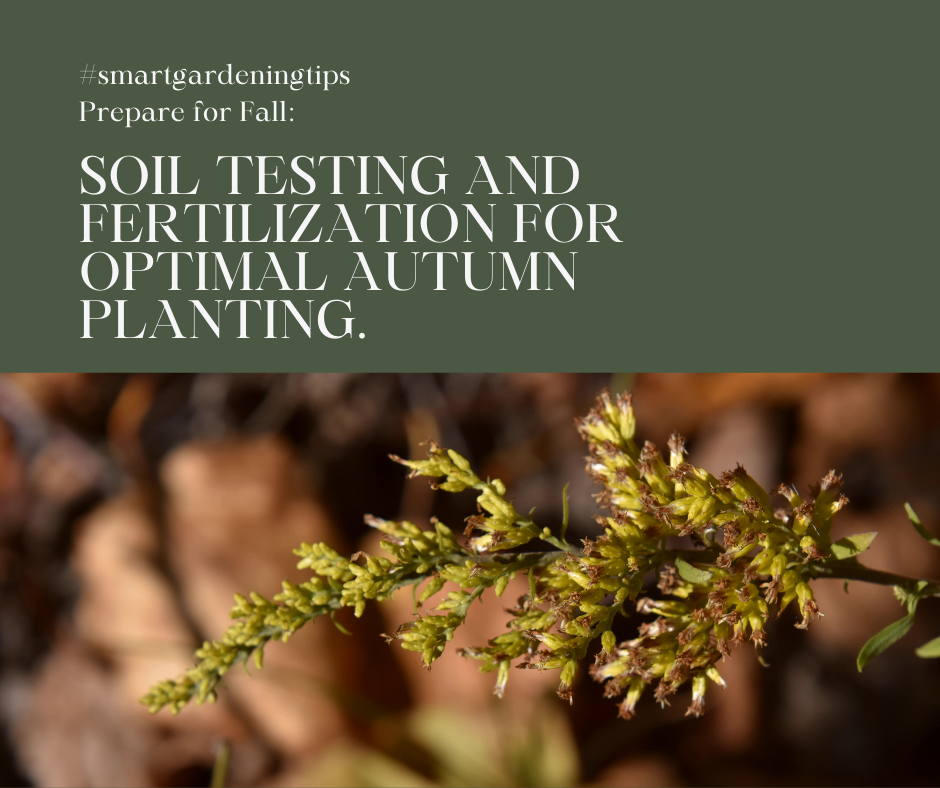
When it comes to autumn planting, one of the most essential steps to ensure the success of your garden is soil testing. Proper soil testing provides valuable insight into the nutrient composition and pH levels of your soil, allowing you to make informed decisions about fertilization and plant selection.
By testing your soil before the autumn planting season, you can determine its fertility and make adjustments as needed. Whether you’re growing flowers, vegetables, or shrubs, understanding your soil’s specific needs is crucial for optimal plant growth. Soil testing is especially important because it helps you identify any deficiencies or imbalances that can hinder plant development.
Once you’ve obtained the results of your soil test, you can choose the right fertilizer tailored to your specific garden requirements. Fertilization during autumn provides essential nutrients that support root development and prepares plants for the colder months ahead. When selecting a fertilizer, consider the nutrient requirements of your chosen plants and the current nutrient levels in your soil.
The type of fertilizer you choose will depend on the needs of your plants. For example, nitrogen-rich fertilizers are beneficial for promoting leafy growth, which is vital for cool-season vegetables. On the other hand, phosphorus-rich fertilizers are ideal for encouraging root development and flower production.
Importance of Proper Fertilization for Autumn Planting
“Proper fertilization in autumn sets the foundation for strong and healthy plants. It enhances their ability to withstand harsh winter conditions and ensures vigorous growth when spring arrives.”
Fertilization also plays a crucial role in replenishing nutrients that may have been depleted during the summer growing season. By providing essential elements such as nitrogen, phosphorus, and potassium, you can replenish the soil and give your plants a head start for the following year.
In addition to choosing the right fertilizer, it’s important to follow proper fertilization techniques. Always refer to the manufacturer’s instructions for application rates and timing. Applying too much fertilizer can result in nutrient overload, which can harm your plants and disturb the balance of your soil ecosystem.
Remember, fertilization is just one part of the equation for successful autumn planting. It’s also essential to consider plant selection, proper watering, and maintenance practices to ensure your garden thrives throughout the season.
Choosing a Fertilizer for Your Autumn Garden
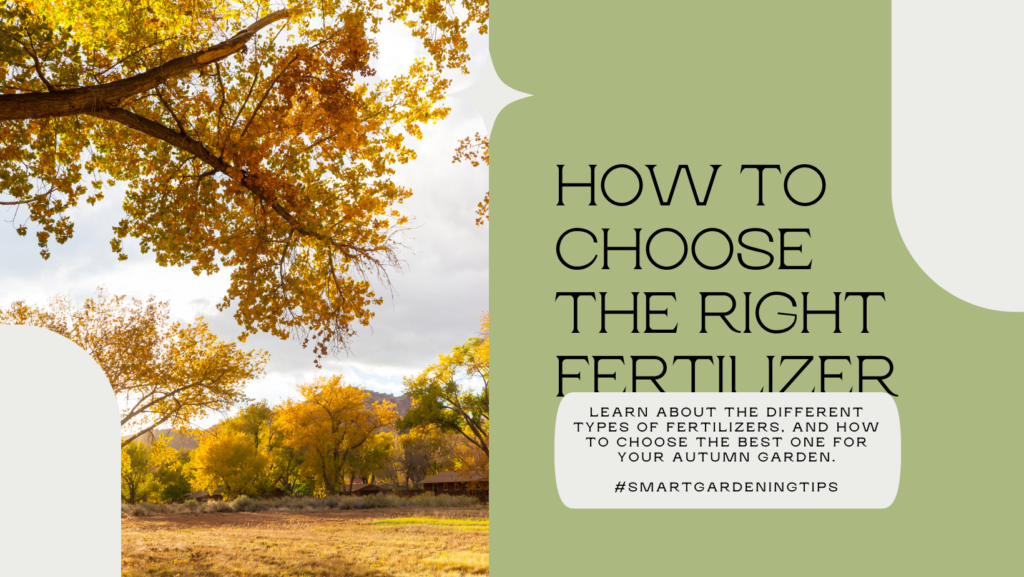
When selecting a fertilizer for autumn planting, consider the following:
- The nutrient requirements of your plants
- The nutrient levels in your soil (as indicated by the soil test)
- The type of plants you are growing (vegetables, flowers, shrubs)
- The desired growth outcomes (root development, flowering, leafy growth)
Based on these factors, choose a well-balanced fertilizer with the appropriate nutrient ratios for your specific needs. Consider using organic fertilizers that promote long-term soil health and sustainability.
| Fertilizer Type | Nutrient Composition | Suitable Plants |
|---|---|---|
| Nitrogen-rich | High in nitrogen (N), lower in phosphorus (P) and potassium (K) | Leafy vegetables (e.g., lettuce, spinach), lawns |
| Phosphorus-rich | High in phosphorus (P), moderate in nitrogen (N) and potassium (K) | Flowering plants, root vegetables (e.g., carrots, onions) |
| Potassium-rich | High in potassium (K), balanced in nitrogen (N) and phosphorus (P) | Fruit-bearing plants, overall plant health |
No matter which fertilizer you choose, always follow the instructions for application. Apply the recommended amount evenly to ensure uniform nutrient distribution throughout the soil. Take care not to over-fertilize, as this can lead to nutrient imbalances and potential harm to your plants.
By conducting soil testing and choosing the right fertilizer, you can lay the groundwork for a successful autumn planting season. Invest in the health of your soil and give your plants the nutrients they need to flourish in the cooler months. Your garden will thank you with vibrant growth and bountiful harvests.
Planting and maintenance in autumn
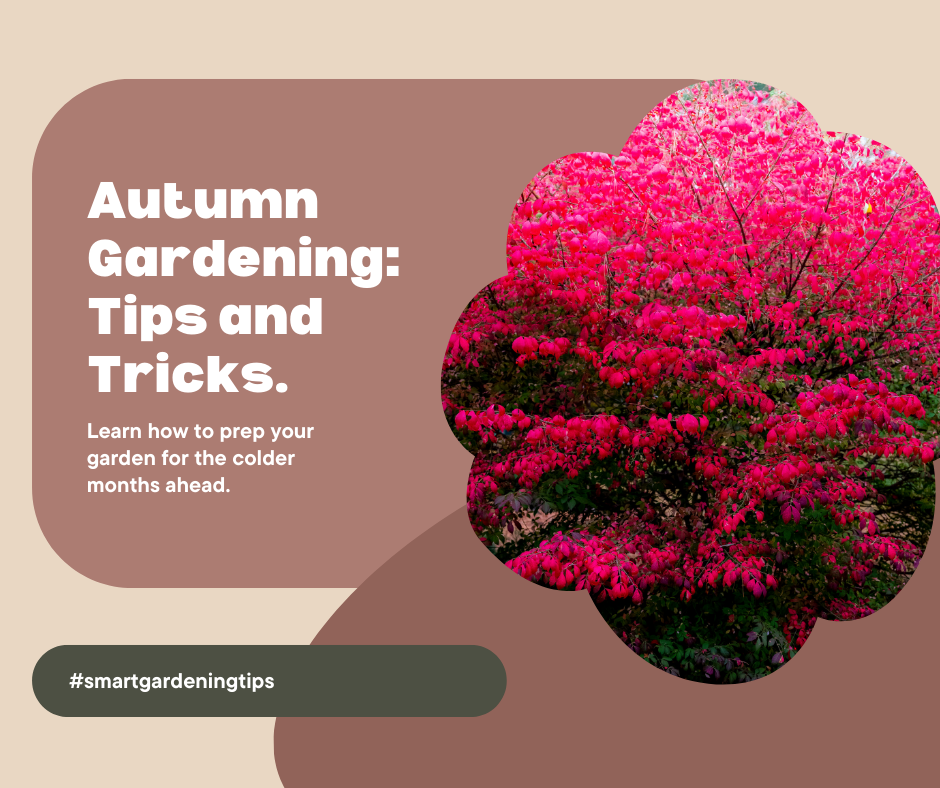
Autumn is a vibrant season when you can give your garden a new lease of life by planting and maintaining the best plants for this time of year. By selecting the right plants and providing them with proper care, you can ensure a thriving garden throughout the season.
Choosing the Best Plants
When it comes to autumn planting, you have a variety of options to choose from. Some of the best plants to consider include:
- Fall-blooming flowers like chrysanthemums and pansies
- Hardy vegetables such as kale, broccoli, and carrots
- Ornamental grasses like fountain grass and switchgrass
- Fruit-bearing trees such as apple and pear
These plants are known for their ability to thrive in cooler temperatures and add beauty to your garden during the autumn months.
Planting Tips
When planting in autumn, it’s essential to follow a few key tips to ensure successful growth:
- Prepare the soil by adding compost or organic matter to improve its fertility.
- Choose a sunny spot for your plants, as they will need plenty of sunlight during this season.
- Water your plants regularly, as the cooler weather can be deceiving, and plants still need moisture.
- Apply a layer of mulch around your plants to regulate soil temperature and retain moisture.
By following these planting tips, you can create an optimal environment for your autumn garden to thrive.
Maintenance Guidelines
Maintaining your garden in autumn will help keep your plants healthy and vibrant. Here are some maintenance guidelines to keep in mind:
- Regularly remove fallen leaves and debris to prevent disease and maintain a clean appearance.
- Monitor your plants for pests and diseases and take necessary action to prevent damage.
- Deadhead flowers and trim back any decaying foliage to encourage new growth.
- Keep an eye on watering needs, as autumn weather can still be dry, requiring occasional watering.
By staying proactive with maintenance tasks, you can ensure the longevity and beauty of your autumn garden.
Remember, autumn is a time of transition and preparation for the colder months ahead. By selecting the best plants for the season, following proper planting techniques, and maintaining your garden diligently, you can enjoy a stunning and thriving garden throughout autumn. Take the time to care for your plants now, and you’ll reap the rewards of a beautiful garden in the seasons to come.
Pest control and protection in autumn
As the autumn season sets in, your garden faces new challenges in the form of pests that thrive in the cooler weather. These pests can wreak havoc on your plants and undo all your hard work. It’s crucial to take proactive measures for pest control and protection to safeguard your garden’s health and beauty. Here are some effective methods to keep common autumn garden pests at bay:
1. Identify the pests
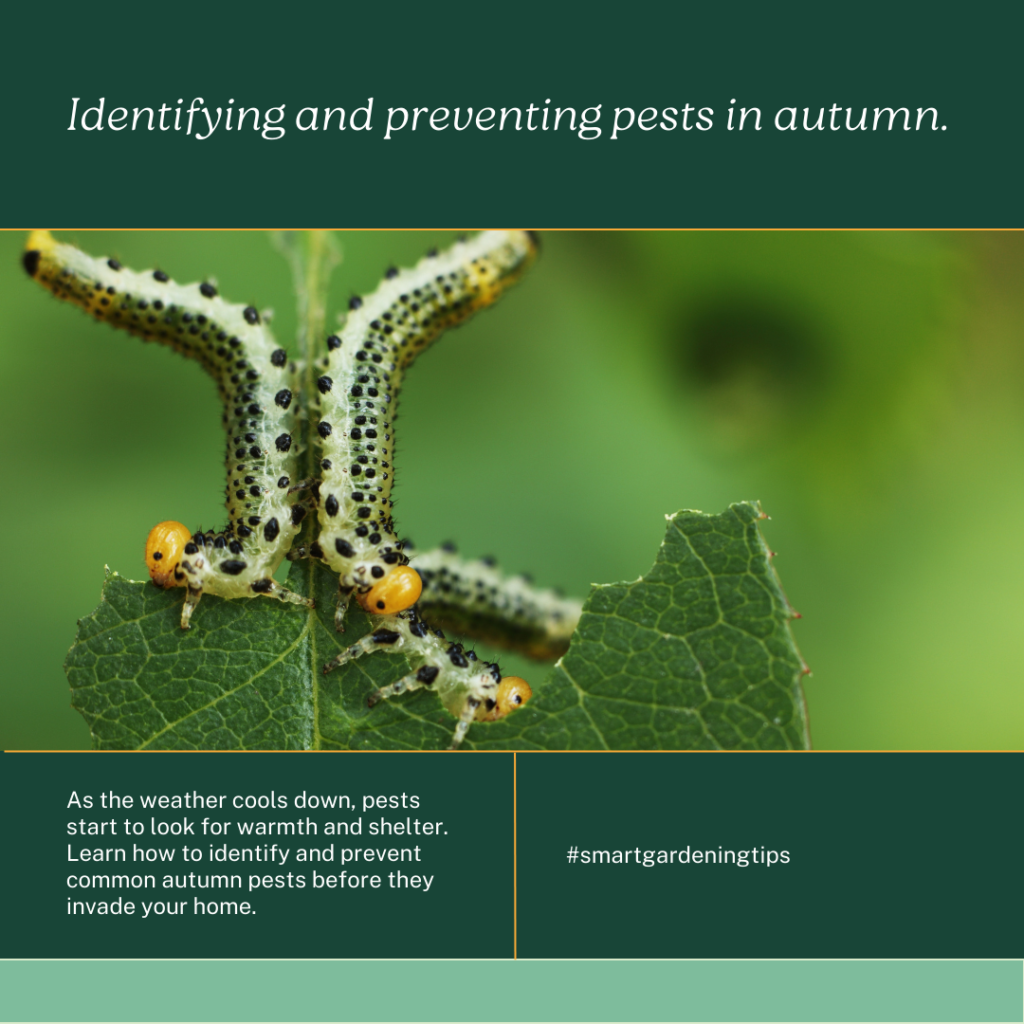
The first step in pest control is identifying the culprits. Common autumn garden pests include aphids, slugs, snails, caterpillars, and spider mites. Regularly inspect your plants to spot any signs of damage or pest presence. It’s essential to know your enemies to plan a targeted defense.
2. Incorporate companion planting
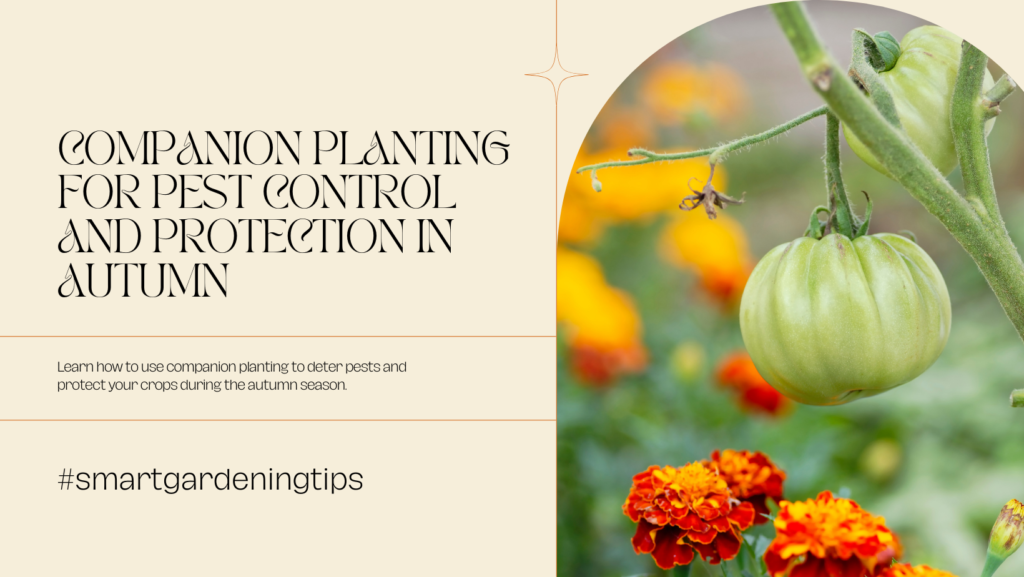
Companion planting involves strategically placing certain plants together to deter pests. For example, planting marigolds near your vegetables can help repel aphids and nematodes. Similarly, aromatic herbs like basil and rosemary can ward off a wide range of garden pests. Research companion plants that are effective against the specific pests you want to control and incorporate them into your garden.
3. Practice good garden hygiene
Keep your garden clean and well-maintained to reduce pest infestations. Remove fallen leaves, weeds, and plant debris regularly, as these can provide hiding and breeding grounds for pests. Dispose of any infected or infested plants to prevent the spread of pests to healthy plants.
4. Use organic pest control methods
Opt for organic pest control methods to minimize harm to beneficial insects and the environment. Natural repellents like garlic spray, neem oil, and soap solutions can be effective against many garden pests. Introduce beneficial insects, such as ladybugs, lacewings, and praying mantises, which prey on pests. Use physical barriers like netting or row covers to protect vulnerable plants.
5. Monitor and act promptly
Regularly monitor your garden for signs of pest activity. Look for chewed leaves, holes, sticky residues, or distorted plant growth. Early detection allows you to take prompt action and prevent the infestation from spreading. Pick off pests manually or employ organic pest control methods immediately to prevent further damage.
Incorporating these pest control and protection methods into your autumn gardening routine will help keep your garden healthy and thriving. By staying vigilant and taking proactive measures, you can enjoy a pest-free garden throughout the cooler months.
Remember, prevention is key, so start early and stay one step ahead of these unwanted visitors. Protect your garden from pests and preserve its beauty and productivity.
Mulching and insulation for winter
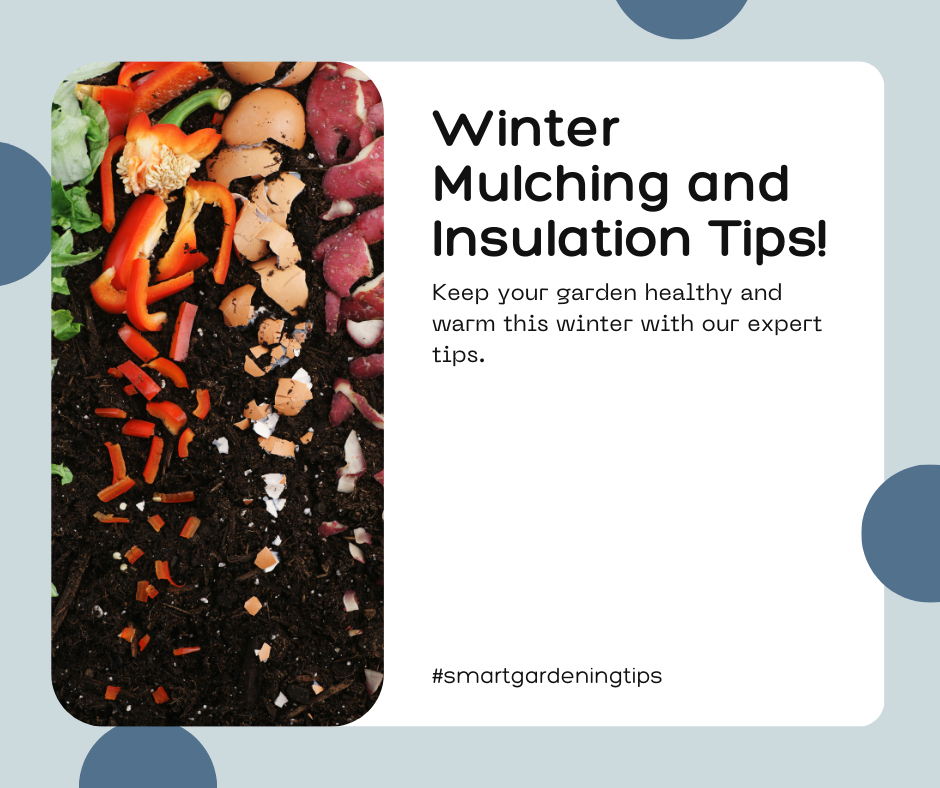
As the winter season approaches, it is important to take steps to protect your garden against the cold temperatures and harsh conditions. Proper mulching and insulation techniques can make a significant difference in the survival and health of your plants during the winter months.
Mulching Techniques
Mulching not only helps to insulate the soil but also provides numerous benefits for your garden. By applying mulch, you can:
- Regulate soil temperature
- Prevent weed growth
- Retain moisture
- Protect plant roots
There are several mulching materials to choose from, including straw, shredded leaves, wood chips, and compost. Select a mulch that suits the specific needs of your plants. Spread a layer of mulch around the base of each plant, ensuring a thickness of 2-4 inches. Be careful to leave some space around tree trunks and plant stems to prevent rot and disease.
Mulching not only protects the soil and roots, but it also adds visual appeal to your garden. It creates a neat and tidy appearance and enriches the overall aesthetics of your outdoor space.
Insulation Methods
In addition to mulching, proper insulation is crucial for safeguarding your plants during winter. Here are some effective insulation methods:
- Covering plants: Use burlap or frost blankets to cover delicate plants and shrubs. This additional layer of protection helps to shield them from freezing temperatures.
- Building windbreaks: Constructing barriers such as fences, hedges, or temporary structures blocks winter winds and reduces the risk of damage to your plants.
- Container insulation: If you have potted plants, wrap the containers with insulating materials like bubble wrap or specialized plant jackets to keep the soil and roots insulated.
By implementing these insulation methods, you can create a microclimate that shields your plants from extreme temperature fluctuations and prevents frost damage.
| Mulching Techniques | Insulation Methods |
|---|---|
| – Regulate soil temperature | – Covering plants |
| – Prevent weed growth | – Building windbreaks |
| – Retain moisture | – Container insulation |
| – Protect plant roots |
Remember to remove mulch and insulation gradually in early spring to prevent damage to new growth. As the temperatures rise and the risk of frost diminishes, expose the plants to more sunlight and air circulation.
By taking the time to mulch and insulate your garden before winter sets in, you can provide the necessary protection for your plants and ensure they thrive when spring arrives.
Harvesting and storage in autumn

As the autumn season approaches, it’s time to reap the rewards of your hard work in the garden. Harvesting your crops at the right time is crucial to ensure optimum flavor and quality. In this section, we will delve into the importance of harvesting your garden produce and provide valuable tips on proper storage to preserve the fruits of your labor throughout the autumn and winter months.
Harvesting Techniques
Knowing when to harvest your crops is essential for peak freshness and flavor. Different plants have different indicators that signal they are ready for harvest. For example, ripe tomatoes will have a vibrant color and yield slightly to gentle pressure, while leafy greens should be harvested when they reach full maturity.
To ensure a bountiful harvest, it’s crucial to be mindful of the optimal time to pluck fruits and vegetables from your garden. Harvesting them too soon or too late can affect both their taste and storability. Regularly check your crops for signs of ripeness and refer to plant-specific guides for more precise guidance.
Proper Storage
After harvesting, proper storage is key to extend the lifespan and maintain the quality of your freshly picked produce. By creating optimal conditions, you can enjoy flavorful vegetables and fruits well into the colder months.
One effective storage method is to separate fruits and vegetables based on their ripening speed. Some produce releases a gas called ethylene, which can speed up the ripening process of nearby fruits and vegetables. Storing ethylene-producing fruits such as apples separately from ethylene-sensitive produce like leafy greens and root vegetables can help prevent premature spoilage.
Tip: Store ethylene-producing fruits and vegetables in perforated plastic bags or ventilated containers to allow proper air circulation.
Maximizing Shelf Life
To maximize the shelf life of your harvested produce, it’s important to handle them with care. Remove any visible dirt or debris and gently clean them if necessary. Cut off any damaged or spoiled parts to prevent the spread of decay. Always handle delicate fruits and vegetables gently to avoid bruising or injury.
For long-term storage, consider preserving your harvest through various methods such as canning, freezing, or dehydrating. These preservation techniques can help you enjoy the flavors of your garden well beyond the autumn season.
Remember to regularly inspect your stored produce for any signs of spoilage. Remove any spoiled items promptly to prevent the spread of mold and decay to other fruits and vegetables.
By adopting proper harvesting techniques and implementing effective storage methods, you can make the most of your autumn garden’s bounty. Stocking your pantry with homegrown goodness will not only provide you with nourishment but also bring a sense of satisfaction and pride. So, start harvesting your crops and savor the flavors of autumn throughout the year!
Seasonal transitions and plant repositioning
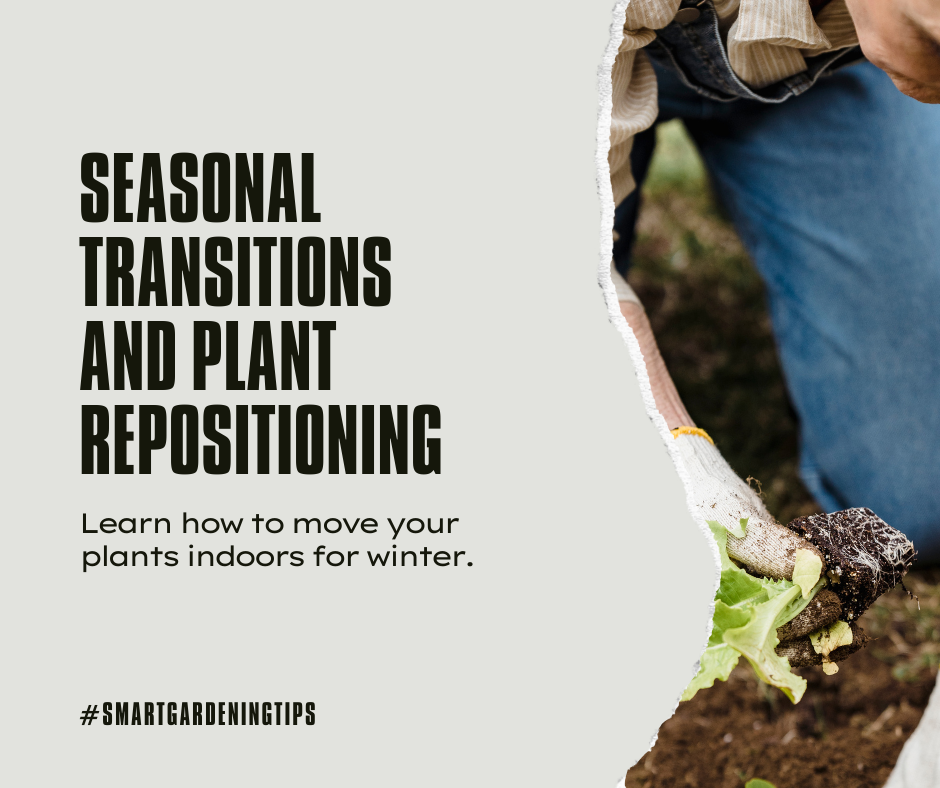
As the seasons change, so do the needs of your garden. Seasonal transitions are a crucial time to reassess and reposition your plants to ensure optimal growth and health. By adapting your garden to the changing weather conditions, you can create an environment that supports the flourishing of your beloved plants.
During seasonal transitions, it’s essential to consider the specific requirements of each plant. Some plants may thrive in cooler temperatures, while others may require more shelter from harsh winds or excessive sunlight. By understanding the unique needs of your plants, you can determine the best repositioning strategies to support their growth.
One key aspect of plant repositioning during seasonal transitions is assessing the amount of sunlight your garden receives. As the angle of the sun changes throughout the year, certain areas of your garden may be exposed to less or more sunlight. Plant repositioning can involve moving sun-loving plants to areas with increased sun exposure and relocating shade-loving plants to areas with more shade.
Another consideration is the temperature fluctuations that occur during seasonal transitions. Plants that thrive in cooler temperatures may require repositioning to areas with more shade or protection from frost. Seasonal transitions are also an excellent time to relocate pots or containers indoors to safeguard delicate plants from harsh weather conditions.
Remember, effective plant repositioning is all about understanding the needs of your specific plants and adapting your garden accordingly. By providing the right conditions, you can support their growth and ensure they thrive throughout the changing seasons.
Repositioning Tips:
- Regularly monitor the amount of sunlight and shade each area of your garden receives.
- Research the specific sunlight and temperature requirements of your plants to determine the best repositioning strategies.
- Consider using moveable planters or containers to easily relocate delicate plants during extreme weather conditions.
- Keep track of the seasonal cycles and plan ahead for future transitions by creating a repositioning schedule.
By taking the time to assess and reposition your plants during seasonal transitions, you can create a thriving and harmonious garden that adapts to the changing weather conditions. Remember to observe your plants closely, monitor their growth, and make adjustments as needed. With proper plant repositioning, you can ensure your garden remains beautiful and healthy all year round.
Creating an autumn garden checklist
As the autumn season approaches, it’s important to have a comprehensive checklist to ensure that you don’t miss any important tasks in your garden. By staying organized and prepared, you can maximize the beauty and productivity of your autumn garden. Follow this step-by-step guide to create your own autumn garden checklist:
Garden Cleanup
- Remove any dead leaves, weeds, and debris from your garden beds to prevent pests and diseases.
- Trim back overgrown plants and remove any diseased or damaged foliage.
- Inspect garden structures, such as trellises and fences, for repairs or reinforcement.
Plant Protection
- Take measures to protect your plants from frost by covering them with blankets or frost cloths.
- Move potted plants to a sheltered location or wrap them with insulating material.
- Consider adding mulch around the base of your plants to provide insulation.
Pruning and Trimming
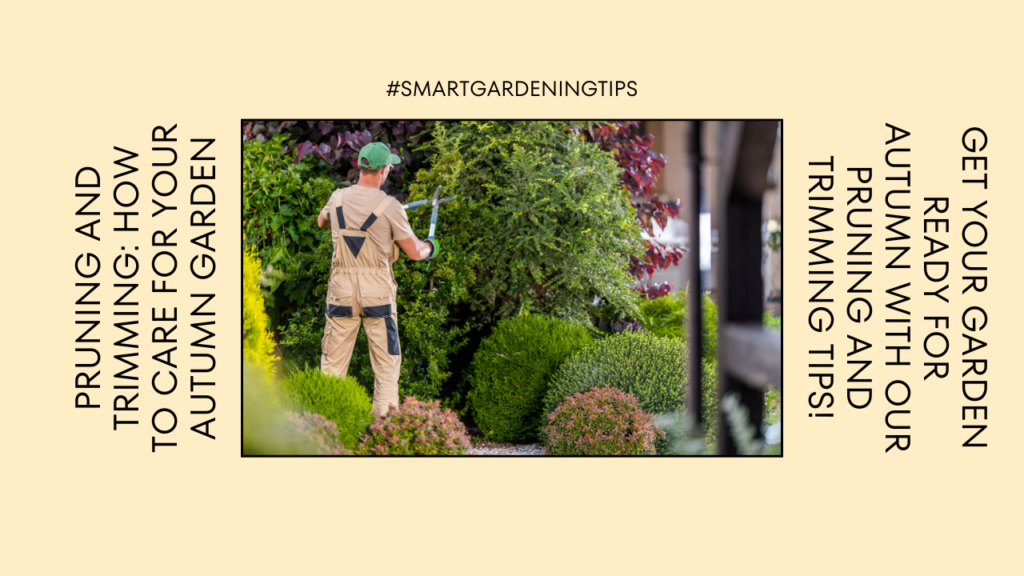
- Prune any dead or damaged branches from trees and shrubs.
- Remove spent flowers and excess foliage to promote healthy growth.
- Trim back any plants that have outgrown their designated spaces.
Soil Testing and Fertilization
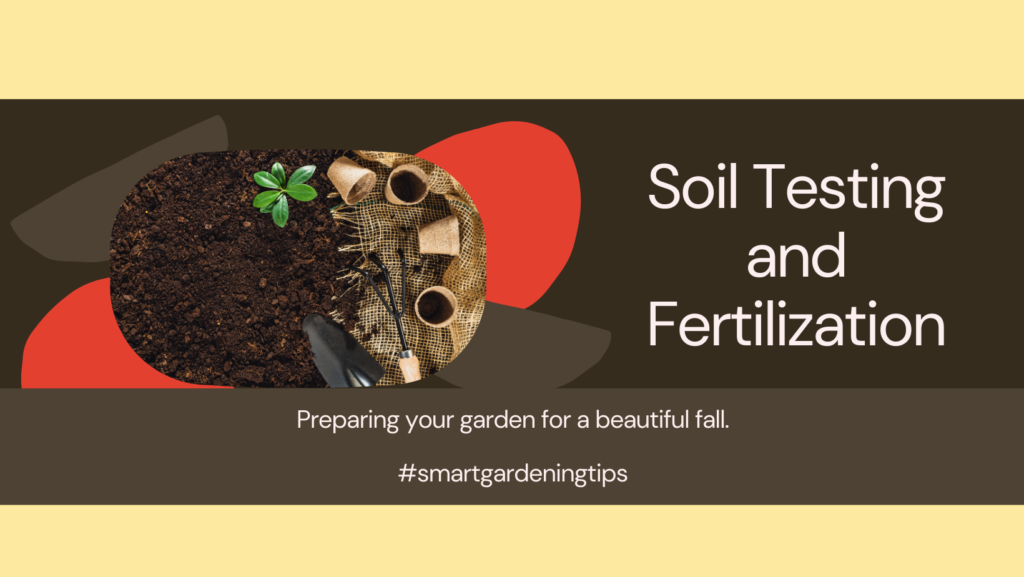
- Conduct a soil test to determine the nutrient levels and pH of your soil.
- Based on the test results, apply the appropriate fertilizers and soil amendments.
- Ensure that your plants have sufficient nutrients for the autumn season.
Planting and Transplanting
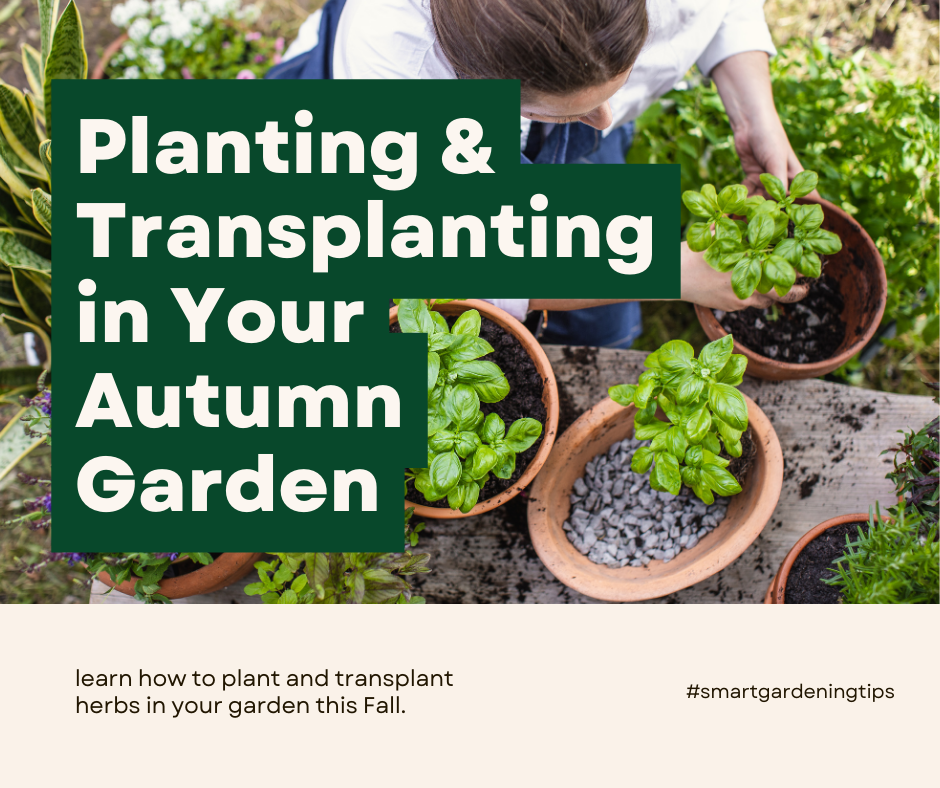
- Plant autumn-blooming bulbs and perennials to add color to your garden.
- Transplant any overcrowded or poorly positioned plants to more suitable locations.
- Consider adding cold-tolerant vegetables for a fresh autumn harvest.
Pest Control
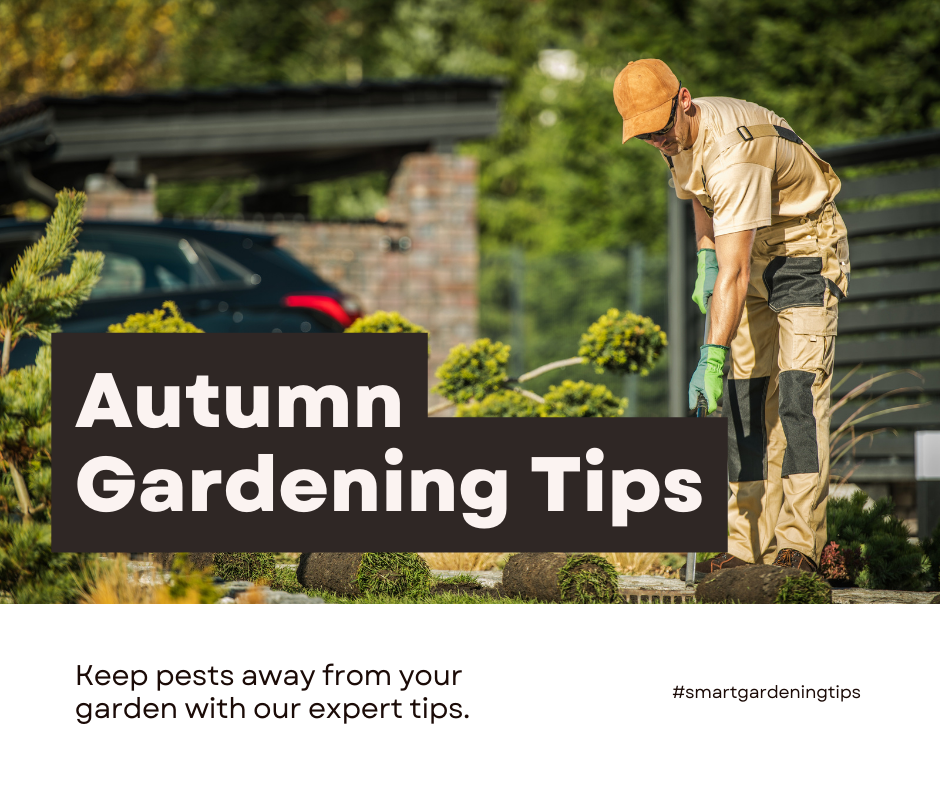
- Inspect your plants regularly for signs of pests and take appropriate measures for control.
- Remove any pest-infested plants or parts to prevent further spread.
- Encourage beneficial insects by planting flowers that attract them.
By following this autumn garden checklist, you can ensure that your garden remains healthy and vibrant throughout the cooler months. Remember to adapt the checklist to your specific garden needs and enjoy the beauty of the autumn season.
FAQ
Q. Why is autumn garden care important?
A. Autumn garden care is important because it allows you to prepare your plants for the cooler season ahead. Proper care during autumn ensures that your plants are healthy and resilient, ready to withstand the harsh weather conditions that winter may bring. It also promotes the growth of strong roots, which will benefit your plants in the long run.
Q. How should I prune and trim my autumn plants?
A. When pruning and trimming autumn plants, it’s important to remove dead or damaged branches to promote the growth of new and healthy ones. Make sure to use clean and sharp tools to avoid any damage to the plants. Focus on shaping the plant and removing any overgrown or crowded branches. Additionally, avoid pruning frost-sensitive plants too late in the season to prevent potential damage.
Q. Why is soil testing and fertilization important for autumn planting?
A. Soil testing is crucial for autumn planting as it helps determine the nutrient levels and pH balance, allowing you to make informed decisions about fertilization. By knowing the specific needs of your soil, you can choose the right fertilizer to provide the necessary nutrients for your plants to thrive. This ensures healthy growth during the autumn season and prepares your garden for optimal spring growth.
Q. What are some of the best plants to grow in autumn?
A. Some of the best plants to grow in autumn include cool-season vegetables like broccoli, kale, and lettuce, as well as ornamental plants like chrysanthemums, pansies, and asters. These plants are more tolerant of cooler temperatures and can add vibrant colors to your garden during the autumn months. Additionally, certain herbs like parsley and cilantro also thrive in the autumn season.
Q. How can I protect my garden from pests during autumn?
A. To protect your garden from pests during autumn, regularly inspect your plants for signs of infestation. Use organic pest control methods such as neem oil or insecticidal soaps to prevent and treat common autumn garden pests. Implement physical barriers like row covers or netting to keep larger pests away. Properly dispose of any fallen leaves and debris that may harbor pests. Additionally, encourage beneficial insects like ladybugs and lacewings to help control pest populations.
Q. Why is mulching and insulation important for winter?
A. Mulching and insulation are important for winter because they help protect your plants from freezing temperatures. Mulch acts as a protective layer on the soil, preventing the freeze-thaw cycle that can damage plant roots. It also helps retain moisture and suppresses weed growth. Insulation, such as covering plants with burlap or using protective frost blankets, can provide an extra layer of warmth and shield plants from harsh winter winds.
Q. How should I harvest and store my crops in autumn?
A. When harvesting in autumn, it’s important to pick your crops at their peak ripeness. Handle them carefully to avoid bruising or damage. After harvesting, store your crops in cool, dry locations to extend their shelf life. Some crops, like apples or root vegetables, can be stored in a cellar or pantry. Others, like leafy greens or herbs, are best stored in the refrigerator.
Q. How should I transition my plants between seasons?
A. To transition your plants between seasons, start by identifying which plants are frost-tolerant and which are not. Move frost-tender plants indoors or to a protected area before the first frost arrives. For perennial plants that go dormant in winter, cut back the foliage after it has died back. Reposition plants to take advantage of changing sunlight patterns and adjust watering and fertilization as needed.
Q. How can I create an autumn garden checklist?
A. To create an autumn garden checklist, start by assessing your garden’s needs and prioritizing tasks. Divide your checklist into categories such as pruning, fertilizing, planting, and pest control. Consider specific tasks like cleaning garden tools, repairing structures, or mulching. Be sure to include any plant-specific requirements or unique needs in your checklist. Keep the checklist organized and cross off tasks as you complete them.
Conclusion
As we wrap up this autumn garden care guide, it’s clear that taking the time to prepare and maintain your garden during the cooler season is vital for its overall health and beauty. By implementing the tips and techniques discussed in this guide, you can ensure that your plants are well-cared-for and ready to thrive.
Remember, pruning and trimming your autumn plants not only promotes better growth but also prevents diseases and pests from spreading. Additionally, soil testing and fertilization play a crucial role in providing the necessary nutrients for your plants’ roots.
Don’t forget to choose the right plants for autumn and provide adequate care throughout the season. By protecting your garden against pests and insulating it with mulch, you can safeguard your plants from the challenges of colder weather.
Lastly, make sure to harvest your crops at the right time and store them properly to enjoy the fruits of your labor. And always be ready for seasonal transitions by repositioning your plants accordingly.
By following these guidelines and creating your own autumn garden checklist, you can maintain a vibrant and thriving garden that will bring joy and beauty to your outdoor space throughout the autumn season. Happy gardening!
















